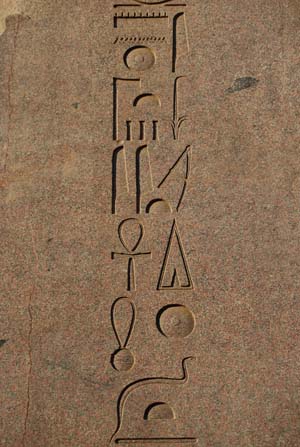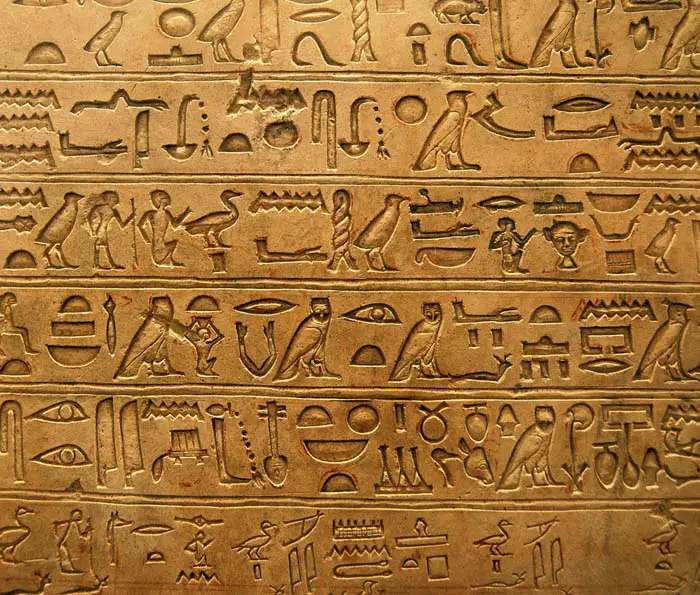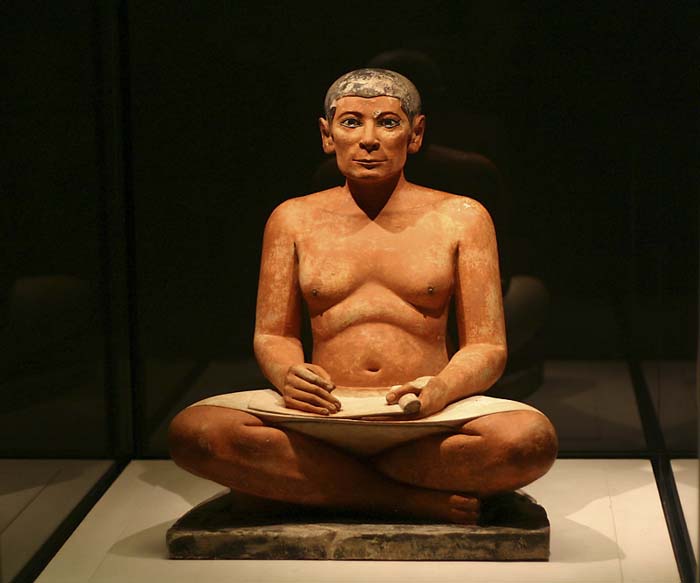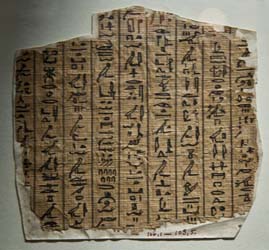What are Hieroglyphs?
 ©Aleksandar Cocek – Hieroglyphs at Karnak
©Aleksandar Cocek – Hieroglyphs at Karnak
Scholars have discovered that there are three different classes of Egyptian hieroglyphics. Some signs belong to more than one class.
- Phonograms are signs that represent a specific sound. Some correspond with the sounds of two or more letters.
- Ideograms represent ideas instead of sounds. Examples of ideograms are the hieroglyphs that represent the gods.
- Determinatives are hieroglyphs that were not spoken or translated. They help make the meaning of words clearer and mark the end of words. The Egyptians placed no spaces between words or sentences.
The Egyptian language did not have written vowels, so the exact pronunciation of ancient Egypt is not known. Due to this, some words used the same constants. Scribes put determinatives on the ends of these words to show which word was meant. These signs also distinguished male names from female ones by placing a sign of a man or woman at the end of the name discussed.
Hieroglyphs are read vertically, horizontally, from right-to-left or from left-to-right. The signs reveal which direction carvings should be read. If the signs face right, they should be read right-to-left. If they face left, they should be read left-to-right.
Click here to learn more about The Hieroglyphic Alphabet
Some objects had inscriptions that were read in two or more directions. The Egyptians believed in creating balanced objects. If an inscription was on one side of a window, then they would carve another inscription on the other side. Egyptians avoided leaving empty space. They stacked their signs and left no spaces between words or sentences.
 ©Andrea – Hieroglyphs
©Andrea – Hieroglyphs
History of Egyptian Hieroglyphs
Scholars believe that Egyptian hieroglyphs developed around 3200 BC. At first, the Egyptians used between 700 and 800 signs. By 300 B.C. Over 6,000 signs were in the written language. Many hieroglyphs came from nature or daily life.
Animals like lions or owls represented sounds or ideas. Shapes represented loops of ropes or houses. While many animals or shapes represented the idea they resemble, not all of them did. People needed specialized training to read and understand hieroglyphs.
Only elite Egyptians, like royals, nobles, priests and scribes, could read hieroglyphs. These people made up about 3% of the population. Scribes went to special schools and some began training at age 12. Students had to begin by learning 200 different signs.
 ©Ivo Jansch – Statue of a Seated Scribe, displayed at the Louvre
©Ivo Jansch – Statue of a Seated Scribe, displayed at the Louvre
People with a basic knowledge of hieroglyphs knew around 750 signs. A skilled scribe had to memorize over 3,000 hieroglyphs. Scribes earned a good living through their work, and were valued members of the community. They used special tools in their work.
Scribes painted inscriptions on buildings or objects before carvers engraved them. Scribes also used papyrus, a paper-like substance made from plants, as a writing surface. They wrote with reed brushes and different colors of ink. Scribes used red or black ink for words and colored ink for pictures.
 © Quikwhitefox86 – Papyrus Exhibit
© Quikwhitefox86 – Papyrus Exhibit
Over time, two other Egyptian scripts, hieratic and demotic, developed.
- Hieratic was a cursive form of hieroglyphics with less complicated and connected signs. Scribes used it to write documents and letters, because writing in hieratic was faster. Scribes always wrote hieratic right-to-left and used carved reed brushes.
- Demotic developed around 660 B.C. It was an abbreviated script with signs that did not look like the corresponding hieroglyphs. Writing with demotic was even faster than writing with hieratic.
After the Greeks conquered Egypt, knowledge of hieroglyphics began fading. The royal family and most of the elites spoke Greek. Use of hieroglyphs faded even more after Rome conquered Egypt. Another written form of Egyptian, Coptic, developed.
Coptic used only 30 signs, many of them Greek. Most Coptic signs only represent one sound. Some Coptic words helped scholars decipher hieroglyphics. Modern study of hieroglyphs flourished after the discovery of the Rosetta Stone.







































